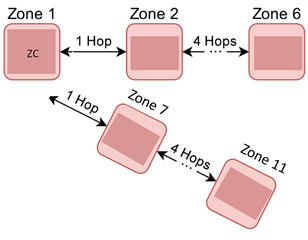Other Parts Discussed in Thread: CC2538, CC2530, CC2652P, Z-STACK, SYSCONFIG
Hi TI,
We need a zigbee network with a large number of devices. We have these doubts:
1-) What is the largest real (not theoretical) number of devices (end devices and routers) that we can add to the coordinator (CC1352-ZNP)?
2-) What is the largest real (not theoretical) number of devices (end devices and routers) that we can add to a repeater?
3-) To achieve the highest transmission power and reception sensitivity, which of these modules would be the best option: CC2530, CC231, CC2538, CC2352, CC2652? If you have other alternative, please can you suggest us.
Thanks,
Best Regards.


